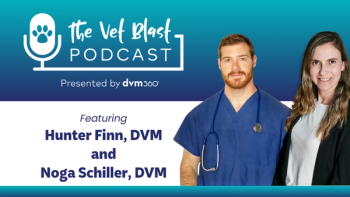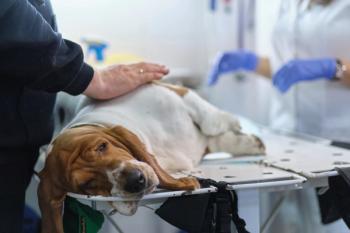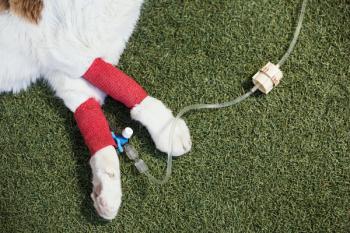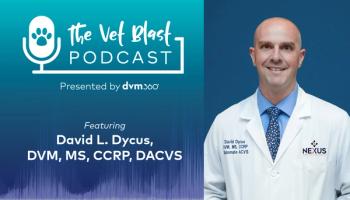
Pet healthcare industry summit mulls action plan on boosting DVM population
Portland, Ore. - More than 140 leaders, representing many of the diverse disciplines in the veterinary market, hope to address the perceived and growing shortage of veterinarians in the United States.
PORTLAND, ORE. — More than 140 leaders, representing many of the diverse disciplines in the veterinary market, hope to address the perceived and growing shortage of veterinarians in the United States.
The goal of the 2007 Pet Healthcare Industry Summit, sponsored by Banfield, The Pet Hospital, was to explore changing market dynamics and offer solutions to long-term problems including the recruitment, training and retention of a flat work force.
The two-day meeting drew association leaders, academicians and leaders of many of the top animal-health firms.
Banfield Chairman Scott Campbell, DVM, reports the meeting was called to explore changes in market dynamics and identify tangible areas in which the profession can work toward meeting goals and challenges of tomorrow.
Topping the agenda was this year's release of the Association of American Veterinary Medical Colleges' (AAVMC) Foresight Report. This broad-based industry report sought to "identify pathways which will be critical for veterinary medicine in the next 25 years."
Recruitment and retention of veterinarians to address a shortage in a diverse array of disciplines, including companion-animal medicine, fueled much of the discussion.
What's driving the shortage? In companion-animal medicine, the ratio of veterinarians entering the market vs. retirees is flat – a long-standing trend in this market. On the decline is the average number of hours worked each week by veterinarians, while demand is increasing — rapidly.
Case in point: In Banfield's 635 hospitals, one-third of its work force is part-time. It's a trend that is not just a Banfield problem. Numerous surveys, including last-year's DVM Newsmagazine's State of the Profession survey, have documented that veterinarians are logging fewer hours in the office in a variety of practice sizes. Quality of life is good, right? Yes, but someone else has to pick up the hours dropped by an aging baby-boom work force who didn't flinch over a 70-hour work week.
This gap between a flat population and dramatically shorter work week, Campbell contends, is pinching the country's animal healthcare-delivery system.
"If (this gap) gets too big, only bad things start happening, because society will legislate change to fill the need, and that might not be good for veterinarians," he says.
The reality: It might just get worse in certain demographic segments. For most companion-animal practitioners, the oversupply question has been a longstanding hard sell and largely dependent on the dynamics of each practitioner's community.
When you factor in a blossoming pet healthcare market (roughly translated, demand is increasing), well, it's decidedly caught the ear of academia.
In fact, AAVMC's report is calling on veterinary colleges to address the issue of supplying companion-animal veterinarians to the market as well as mothering 10 other growing areas of professional focus identified in AAVMC's report.
For Banfield's new president, John Payne, former animal-health industry executive, the issue is about growing the financial pie within animal health. "We have been about creating growth. But we can't tackle these problems all on our own. The biggest problem facing this industry is there are not enough veterinarians."
The shortage of veterinarians in rural areas has become so critical, the cries for relief sparked national legislation now on the move in Congress (see related story). "This is the most important piece of legislation to affect veterinary medicine in the last 30 years," contends Dr. Greg Hammer, American Veterinary Medical Association president.
Attendees assembled in breakout groups to consider many of the recommendations outlined in the Foresight Report.
Scott Campbell, DVM
Some of the suggestions included:
- Improving veterinary education tracking by professional focus during a veterinary student's third and fourth years.
- Determining national manpower needs/forecasts in the areas of professional focus (e.g. public health, equine medicine, etc.)
- Create new centers of excellence to help train students interested in less traditional or underserved areas of veterinary medicine.
- Improve existing programs to attract and retain new veterinarians.
- Work with professional licensing boards to streamline and adapt testing requirements based on areas of professional focus.
John Payne
While the Foresight Report looked at possible pathways for the profession in the next 25 years, Dr. Keith Prasse, former dean at the University of Georgia College of Veterinary Medicine and spokesperson for the report, says the next step is to create a strategic plan for veterinary medicine and the colleges, which is expected to begin this year.
Newsletter
From exam room tips to practice management insights, get trusted veterinary news delivered straight to your inbox—subscribe to dvm360.



